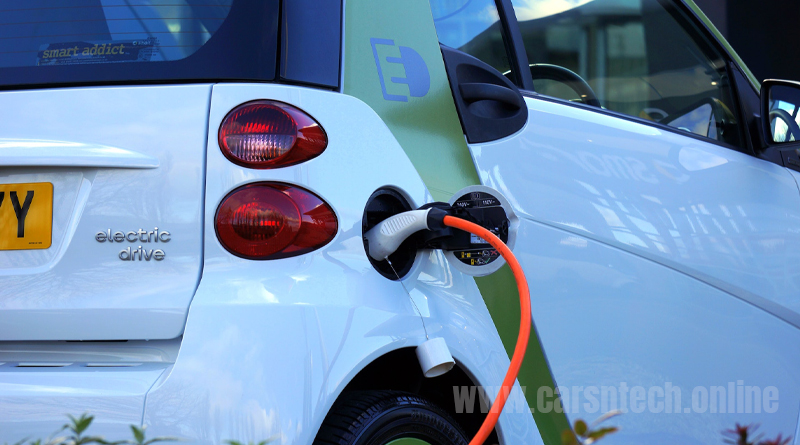How To Extend the Life of Your Electric Vehicle Battery Pack: Tips and Techniques
Electric vehicles (EVs) have gained significant popularity in recent years due to their eco-friendliness and cost-effectiveness. However, concerns about the battery life and its impact on the overall longevity of EVs have also arisen. In this article, we will explore the steps you can take to extend the life of your electric car’s battery, ensuring optimal performance and efficiency for years to come.
1. The Truth About EV Battery Life
Before diving into battery-saving techniques, let’s clarify some misconceptions about EV battery life. While older battery-powered devices had limited lifespans, modern EVs utilize sophisticated battery management systems to optimize battery performance. Many manufacturers offer extended warranties, some lasting up to 8 years, showcasing their confidence in the technology.
2. Avoid Full Charging When You Can
Charging your EV’s battery to its full capacity frequently may seem convenient, but it can negatively impact its long-term health. To extend battery life, avoid charging to 100%. Instead, stop at around 80% capacity for everyday use. This practice prevents stress on the battery and contributes to its overall longevity.
3. Avoid Deep Discharging Your Battery Pack
Lithium-ion battery packs prefer partial cycles over deep discharges. Unlike older battery technologies, lithium-ion chemistries do not suffer from a memory effect, allowing partial discharges without harm. Plan your trips with regular charging options throughout the day to avoid deep discharging, ensuring you always have a comfortable range.
4. For Plug-in Hybrids (PHEVs), Consider “Save” for Climbs or Long Drives
Plug-in hybrids and range-extended electric vehicles may utilize all available battery capacity before switching to petrol power. To prevent deep cycling and protect the battery, take control of battery vs. petrol use. For uphill drives, engage the “Save” mode at least 20 minutes before starting the climb, ensuring the batteries are not deeply discharged.
5. Parking Tips: Stay Cool in the Heat and Warm in the Winter
Extreme temperatures can impact battery health and performance. On hot days, park your EV in the shade to minimize continuous operation of the thermal management system, which can drain the battery. In cold weather, plug in your EV whenever possible to engage the thermal management system without excessive battery drain.
6. Plan Ahead for a Period of Extended Storage
If you anticipate not using your EV for an extended period, follow these steps to maximize battery life:
- Store the vehicle in a cool location.
- Charge the battery to around 60% capacity before storage.
7. Minimize the Use of DC Quick Charge
While DC quick charging is convenient for long journeys, it can impact battery life. Whenever possible, opt for slower AC chargers, reserving DC quick charging for situations when it’s necessary.
8. Minimize Exposure to Extremely High Temperatures When Parked
Exposing your EV to extreme heat while parked, especially without being plugged in, can negatively affect battery life. Automated temperature control systems can drain batteries to keep temperatures optimal, so park in the shade or plug in to ensure the thermal management system functions efficiently.
9. Minimize the Batteries at 100% State of Charge
Keeping your EV battery at a full 100% state of charge regularly can impact its overall lifespan. Utilize the battery management system that avoids charging and discharging at extreme states of charge for better battery performance.
10. Avoid Using Fast Charging
While fast charging is convenient, it places significant stress on the EV battery. To maximize battery life, avoid using fast charging unless necessary for long journeys.
11. Control the Optimal Battery State of Charge During Long Storage
If your EV will be parked or stored for an extended period, take measures to preserve battery life. Using a timed charger, set the charge just above the low mark, maintaining an average charge level between 25% and 75% to reduce strain on the battery.
Conclusion
Taking proactive steps to extend the life of your electric vehicle battery pack is essential for maintaining its performance and longevity. By avoiding full charging, deep discharging, and excessive exposure to extreme temperatures, you can optimize your battery’s health and ensure its efficiency for years to come.
FAQs
Q1: How long can an electric car battery last with proper care? The lifespan of an electric car battery can vary depending on the model and usage. With proper care and following the recommended practices, modern EV batteries can last anywhere from 8 to 15 years.
Q2: Should I always charge my EV to 100% before long trips? While it may seem beneficial for maximizing range, charging to 100% frequently can put stress on the battery. It’s better to charge to around 80% for daily use and reserve full charging for long trips.
Q3: Can I leave my EV plugged in overnight? Yes, you can do it Modern electric vehicles have sophisticated charging systems that prevent overcharging and ensure battery safety during extended charging periods.
Q4: Is fast charging harmful to all electric car batteries? Fast charging, especially DC quick charging, can lead to accelerated battery degradation over time. It’s best to use fast charging sparingly and rely on slower AC chargers for regular charging needs.
Q5: Can extreme temperatures permanently damage the EV battery? Extreme temperatures, both cold and hot, can negatively affect the health of your EV’s battery. It’s best to park in the shade on hot days and use a garage in winter to minimize the temperature’s impact on the battery.

